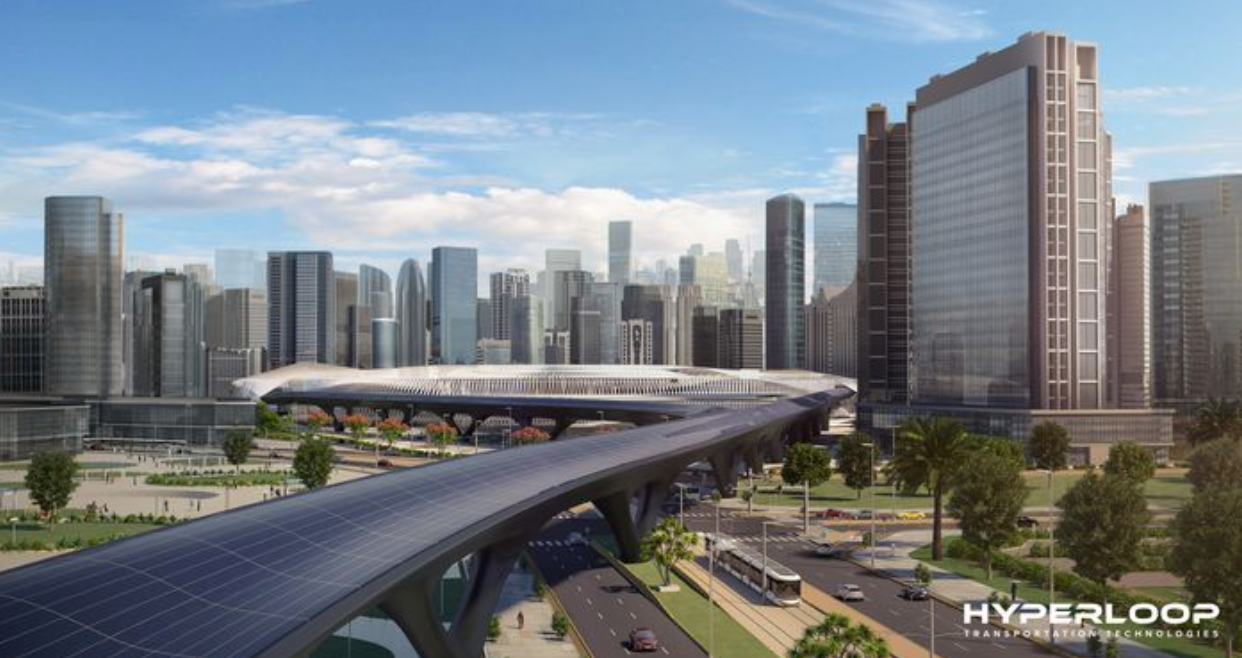
There’s a specific formula newspapers and local television news stations use when talking about the Hyperloop, the Elon Musk-adjacent concept for mega-high-speed intercity travel by vacuum tube.
“Cleveland (or Pittsburgh or Columbus) to Chicago in a Half Hour?” The headline will say. “It could be possible with the Hyperloop.”
We’ve seen this kind of credulous new coverage reprinted almost verbatim dozens of dozens of times around the U.S. in recent years. The Hyperloop concept seems like it was tailor made to fit into an uncritical news headline slot. It trades on a sort of a wish-fulfillment fantasy of eliminating the hassles of long-distance travel. Wouldn’t it be awesome, they ask us to believe.
And it works. These headlines and the company peddling the dream, Hyperloop TT, has produced a fair amount of excitement — irrational exuberance, you might say — about the experimental transportation technology.
Government agencies across the Midwest — and elsewhere — have been proceeding like near-700 mph-speed overland travel is not only a looming possibility, but practically assured. The latest example comes from Cleveland, where regional transportation planners and the Cleveland Foundation funded a $1.2 million “feasibility study” for a 600-mile Cleveland-Chicago-Pittsburgh Hyperloop route.
Following the study’s release, the Northeast Ohio Areawide Coordinating Organization’s head Grace Gallucci said the next step was to find money for a $5 million environmental study and that construction could start as soon as 2023.
But the planning and hype have gotten way ahead of the technology. The Hyperloop, which has constructed a 300-meter test track in Toulouse, France, still has not demonstrated it would be safe or comfortable for human passengers. Nor has the company shown that it can reach its speeds anywhere near what it advertises.

Despite what a feasibility study would suggest, this whole concept is a long way from shovel ready.
Nevertheless, the analysis funded in part by NOACA found that it would cost about $30 billion to construct a 600-mile Hyperloop system from Cleveland to Chicago — much more if the right-of-way needed to be assembled. But even at that price tag the economic development benefits for the region would be more than that, the thinly-sourced study concluded.
These figures, it should go without saying, should be taken with a great big grain of salt. Megaprojects frequently go over budget. And this is a megaproject for a kind of transportation technology that has literally never been constructed before. A new mode of transportation.
In truth the Hyperloop is not quite as revolutionary as its name would suggest. The original concept for Hyperloop, put out by Elon Musk in a widely circulated white paper was to use vacuum propulsion — almost like a bank’s pneumatic tube — to carry people hundreds of miles in minutes.
But since those early days, the concept’s backers have quietly pivoted. The concept being advanced in Northeast Ohio and elsewhere is actually a long-discussed transportation concept called Magnetic Levitation. Maglev, as it is called for short, is a take on train travel that uses magnets to levitate cars just above the tracks.
The Hyperloop takes that concept — which has been discussed for decades but is only in use in a few places in Asia — and puts it inside a tube. The idea is to reduce drag and make it faster.
One key distinction is the Hyperloop, however, is not marketing a train in the sense that it would have high-capacity cars. Instead more private “pods” that can transport just a few people at a time is the modus operandi.
With this distinction the marketing geniuses at Hyperloop TT seem to have seized on some important cultural zeitgeist. Upgrading the current slower-than-driving speed and one-train-in-the-middle-of-the-night passenger rail from Cleveland to Chicago incrementally is an idea that apparently does not excite local political leaders.
Pods and tubes and “hyper” speed — 30 minutes to Chicago! — for a fully-private system, is the kind of thing consultants can sell political leaders on, not incremental improvements to intercity mass transit like Amtrak.





